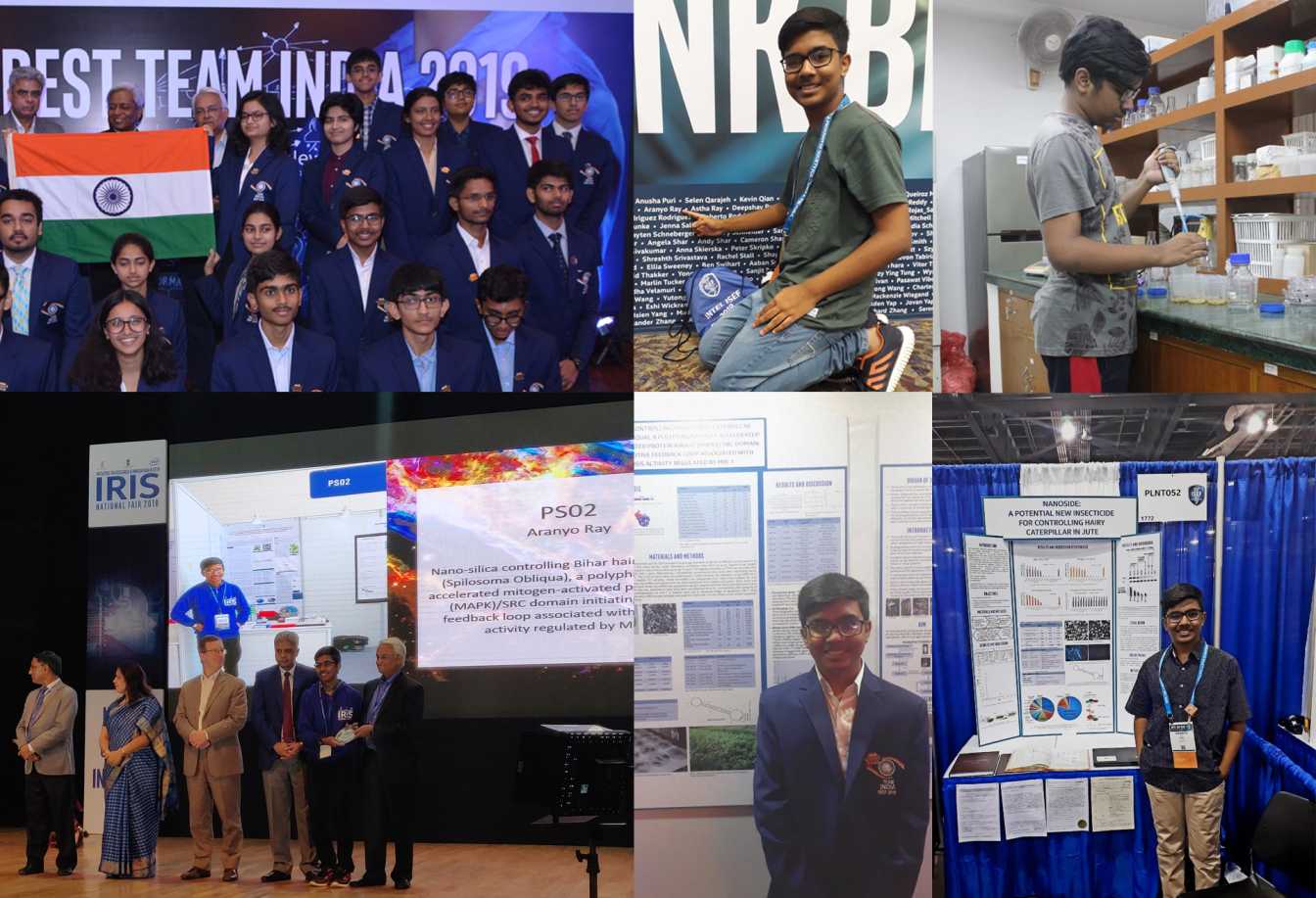Growing up in a farmer’s family, Aranyo Ray, an 18-year-old high school senior from Barasat, a town on the outskirts of Kolkata, was already accustomed to seeing the havoc wreaked by traditional pesticides on farmers and the environment. He decided to intervene and create safer, eco-friendly and effective alternatives.
Aranyo developed a nanopesticide, NanoCide, at the age of 16 for jute farmers. Nanopesticides are safer alternatives to conventional pesticides. “We utilise the latest scientific innovations such as nanotechnology to fight deadly agricultural pests, to protect farmers and the environment,” says Aranyo, who has founded NanoCide, a nonprofit organisation to help marginal farmers defend their crops.
Till date, as many as 1,120 farmers have used NanoCide for their crops, which has greatly benefitted them, their families and their livelihoods. About 200 of them were part of the organisation’s initial field study in 2018, in which they used NanoCide and traditional pesticides simultaneously. As the initial field test had positive results, the rest used only NanoCide in 2019. “To reach even more farmers, last year, we set up NanoCide Bangladesh and used online modes such as social media to spread awareness and set up more partnerships,” says Aranyo.

Aranyo now plans to sustain this momentum and make NanoCide more accessible through online training and stronger partnerships with farmer unions across the country. “Through our existing partnerships with farmers’ associations in Nadia, Malda and Murshidabad districts in West Bengal, we will begin working with four more in Bihar and Assam. In the near future, we also plan to develop a training module to host on our website, to teach how to manufacture and use nanopesticides. NanoCide can be prepared easily in two steps from agricultural waste like rice husk ash, and jute farmers around the world can benefit from this knowledge,” he says.
“My vision is that every jute farmer can access NanoCide,” Aranyo adds.
Making of eco-friendly pesticides
Till the age of six, Aranyo lived at his paternal grandparents’ house in Ranaghat, a city in Nadia district of West Bengal. Grandson of a jute farmer, he was exposed first-hand to the problems faced by agricultural workers in his local community, during visits to his hometown. “In particular, I was introduced to the problem of pesticide overuse and poisoning. The exposure to the land that fed me, made me conscious and aware of farmers’ struggles from the very start. I would often hear stories of crops failing due to drought or other calamities, and would feel for their cause. In class 9, I read about the increasing number of farmer deaths due to pesticide poisoning,” he recalls.
He then felt the need to do something. “After consulting my parents, I decided to approach the Central Research Institute of Jute & Allied Fibres (CRIJAF), which was not far from where we lived. All I needed was to convince a scientist,” he says.
Aranyo began reviewing scientific literature to prepare himself before approaching anyone at the institute because he could not go empty-handed. After an exhaustive search, he found there were virtually no biopesticides or nanopesticides for jute, which were to serve as safer alternatives to traditional pesticides. In search of a safer alternative, he submitted a proposal to a scientist at CRIJAF. “Fortunately, I was accepted to work in his lab. A few days later, I was officially a part of a project to develop a safer nanopesticide for jute,” he says.
Initially, he started testing nanosilica on the pests through in-vitro studies. These involved incubating petri plates and noting down mortality and weight reduction at 48 and 72-hour intervals. Following this, he moved on to glasshouse studies with potted plants in a controlled environment. “This was as close as we could get to replicating natural conditions. After rigorous testing, I had arrived at the final stage of research, which involved bridging the delivery gap so that farmers could safely use NanoCide,” he explains.
Within three months of lab-work, he had successfully developed an economical, eco-friendly and a sustainable nanosilica-based pesticide. The next step was a field study at Ranaghat, in natural conditions. He knew he needed a strong team to accomplish what he could not do alone.
Need for systemic change
“At first, I reached out to my schoolmates, seniors and friends, six of whom volunteered for the project. Next, I joined various social media groups related to jute and began looking for team members. I found three more. Finally, one of my neighbours also volunteered for the cause. Our core team of 11 was formed,” he says.
A field study with 1,120 farmers was conducted in Nadia. Aranyo worked closely with the local Gram panchayat and farmers’ cooperatives to get the study approved and roll out the pesticide. Finally, he set up a supply chain to produce NanoCide annually, inspired by his grandfather.
Looking for money to fund his father’s heart surgery, Madhu, a jute farmer from Barasat, had faced huge losses last year. After this experience, he was determined to turn a profit and was anxious if pests would be a burden. He was one of the first people to call Aranyo after selling his crops. “Aranyo’s NanoCide has worked wonders. I’m very happy. I thank Aranyo and his team, for saving my father’s life. I cannot wait to tell everyone about this miracle,” Madhu says.
From the very beginning, Aranyo wanted systemic change. “I could have fundraised and purchased organic pesticides, but I chose to develop a novel nanopesticide and eventually set up a supply chain for years to come. Over two years, farmers from several groups and sections have come together and produced healthy crops, which have improved their livelihood. Simultaneously, the environment and their health have remained pristine. That, I feel, is real empowerment,” he says.

Aranyo’s innovative projects have made him a three-time IRIS National Fair finalist. His nanopesticide for jute represented India at the Intel ISEF in USA, and further won the Pramerica Spirit of Community Service Award, given to the top two projects out of 3,200 plus submissions for voluntary community service. As a National Honouree, Aranyo was invited to Washington DC to meet other awardees and US Senators, in order to talk about his impact. His social entrepreneurship has received international recognition, and as a LaunchX alumnus and Ashoka Young Changemaker 2021, he has secured his first deal with a chemical company to mass-produce NanoCide and distribute it at subsidised rates.
“Aaranyo’s initiative not only has the potential to help re-imagine some of our current agricultural practices but also inspires young students to leverage their education and innovation for solving important societal challenges,” says Yashveer Singh, cofounder and global director, Ashoka Young Changemakers.
Whilst being involved in these activities, Aranyo pays equal attention to his academics and thrives in challenging environments. This year, he was admitted to the Summer Science Program at Purdue University, a research program affiliated with MIT and Caltech. Owing to COVID-19, he participated virtually and studied college-level biochemistry on a full-ride scholarship.
We need more changemakers like Aranyo with creative solutions for the future.
(Written by Mamta Sharma; Edited by Yoshita Rao)
No comments:
Post a Comment